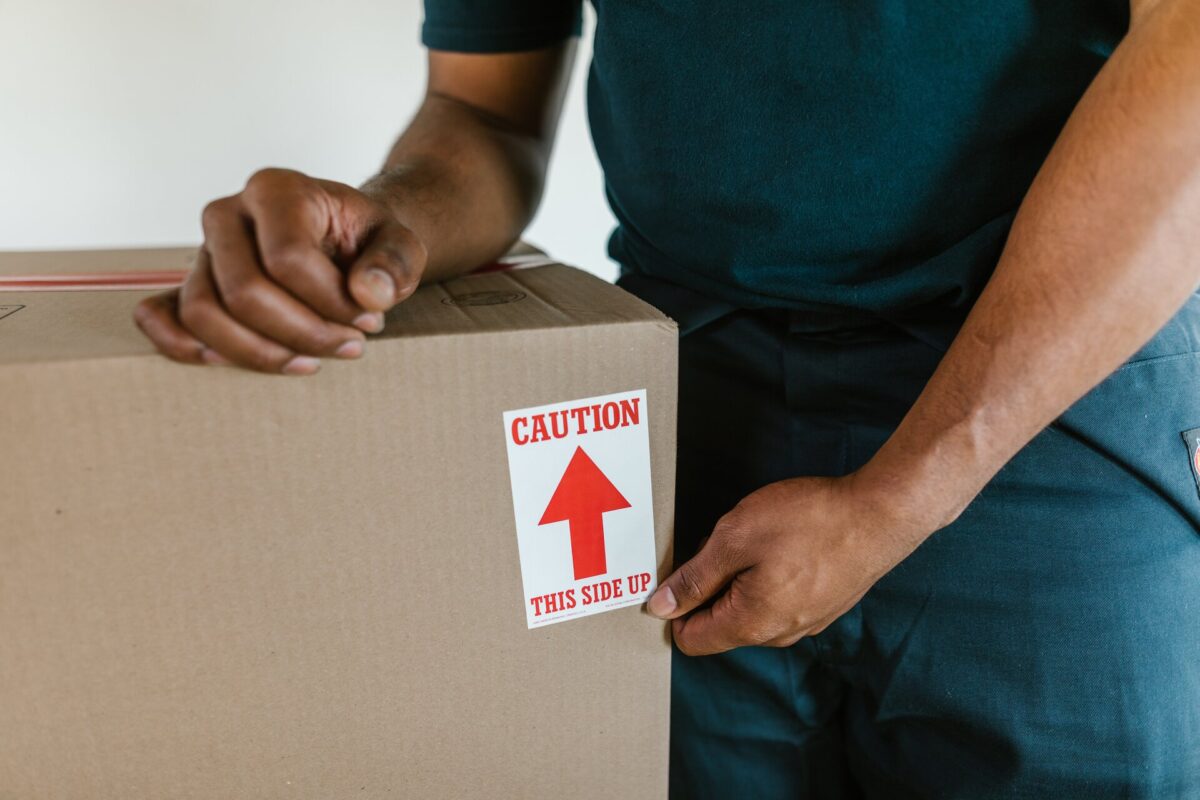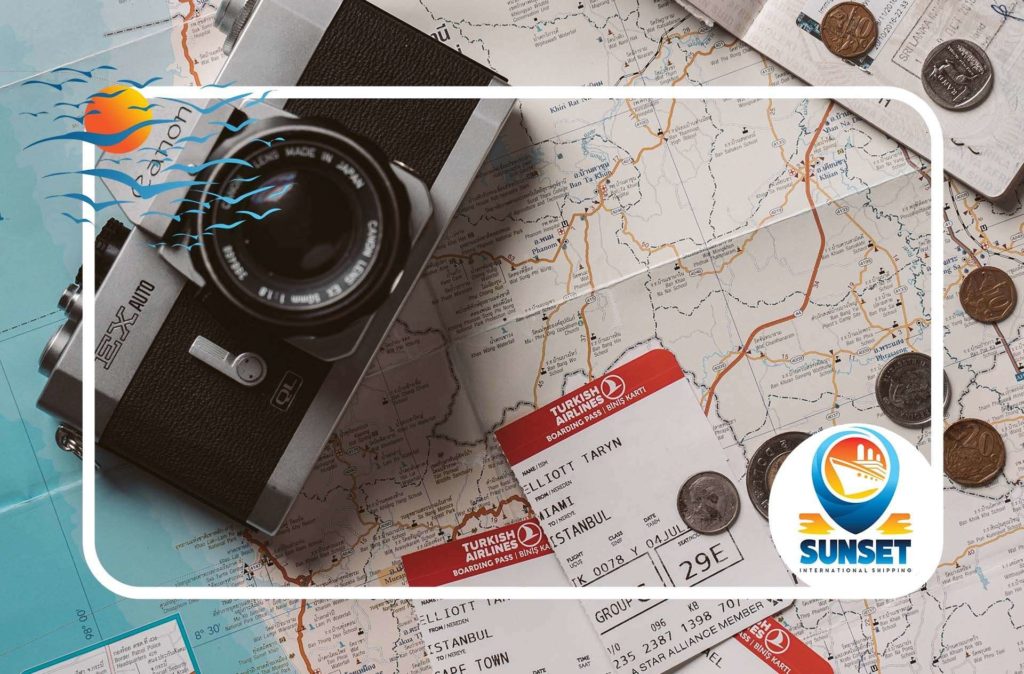Embarking on a new chapter in life often means ensuring your cherished literary companions make the journey safely. Learning how to pack books for moving is crucial for all bibliophiles on the move. In this guide, we’ll unveil the steps to guarantee all novels, tomes, and anthologies reach their new abode unscathed.


What is the best way to pack books for moving? When preparing literary treasures for relocation, the optimal approach involves standing hardcovers and larger volumes upright, similar to their placement on a shelf, while laying smaller or softcover editions flat. Using sturdy boxes, avoid overpacking to prevent strain on the box and potential damage to the collection. Adequate padding with bubble wrap or packing paper can ensure a snug fit for the titles and shield them from moisture. Nevertheless, if the idea of ensuring the safety of cherished volumes feels daunting, an international moving company specializes in these tasks and can manage the process seamlessly.
Why Proper Packing Matters
Proper packing goes beyond the mere logistics of a move. For many, books hold immeasurable sentimental value, with each page echoing memories, insights, and moments of escapism. Beyond the emotional worth, there’s a tangible monetary stake.
According to McZell Book Writing, in the USA, most paperback novels command a price tag ranging from $13.95 to $17.95. Accumulate a vast collection, and the sum invested becomes clear.
However, the relocation process, replete with bumps, shifts, and potential moisture exposure, can be a minefield for treasured tomes. Without careful packing, damage can transform valued volumes into tattered remnants, causing both emotional and financial loss.
Preparing to Pack – What You’ll Need
When preparing a cherished collection for a journey, especially if you’re relocating to another country, having the right packing materials on hand is paramount. This ensures books remain safe, organized, and free from potential damage during transit. Here’s a checklist of essentials to aid in the process:
- Boxes of various sizes but primarily sturdy and of moderate dimensions to prevent overloading.
- Packing paper for wrapping individual books or creating padding within the box.
- Bubble wrap is helpful for adding an extra layer of protection for rare or valuable editions.
- Tape offers strong adhesive quality to ensure boxes remain sealed throughout the move.
- Labels or markers are there for easy identification. Labels for moving are especially useful when you start unpacking at the new destination.
Choosing the Right Boxes
The choice of the box can make or break the safety of your collection during relocation. It’s tempting to reach for any available box, but that’s where many make critical relocation mistakes. Books are heavy, and their weight can strain or break a subpar container.
Opt for double-walled or corrugated boxes, which offer an added layer of protection and strength. Smaller boxes are preferable, as they prevent overpacking and reduce the risk of box bottoms giving out under the weight. Affordable and sometimes free quality boxes for books can be found in supermarkets and hardware stores, as well as on the Craigslist website (which many always find surprising).
Using Packing Materials Effectively
The role of packaging materials extends beyond merely filling space. They cradle and cushion literary treasures. When using packing paper, lay the book diagonally on the paper and wrap it, tucking in the ends, much like gift wrapping. Bubble wrap, with its cushioned bubbles, offers a protective shield, ideal for rare or valuable editions. If the box has any remaining space, crumple extra paper and place it around the books to avoid unwanted movement.
While these steps ensure safe transit, especially if moving overseas, hiring professionals from an overseas shipping company can be a game changer. Their expertise in packaging and material use can lift the weight, figuratively and literally, off your shoulders.


How to Pack Books for Moving – Different Types Require Different Care
As the excitement of moving to a new home builds, the task of safely transporting your vast library may loom large. Literature, in its diverse forms, demands distinct care during the packing phase.
Whether it’s the robust hardcovers, the more flexible paperbacks, or the invaluable antiques, recognizing the intricacies of each type is paramount for efficient packing. Modify the packaging approach to suit the book’s form and safeguard its condition. Make judicious use of the space in the relocation containers.
Packing Hardcover Books
Relocating hardcovers is an art, and mastering a few relocation hacks can significantly elevate the safety of your collection. Begin by cleaning each hardcover and wiping away dust or debris.
For enhanced protection against potential abrasions, individually wrap each book with paper.
When placing them in the box, it’s recommended to position them upright, emulating their stance on a typical bookshelf while ensuring they’re neither too tight nor too sparse.
Any residual space within the box can be occupied by crumpled paper or bubble wrap, acting as buffers against jostling. Finally, firmly seal the box with reliable tape and aptly label it as “Hardcovers.”


How to Protect Paperback Books
Paperbacks, with their inherent vulnerability, necessitate a strategic approach to ensure their pristine state. Start by inspecting each one for any wear or tear and rectifying minor damages if possible.
In the cardboard box, lay them horizontally, forming neat stacks. This method significantly diminishes risks associated with bending or warping. Though paperbacks are inherently lighter than their hardcover counterparts, it’s crucial to avoid cramming too many into one box. The weight can accumulate, making transportation cumbersome and jeopardizing their condition.
For added assurance, a supplementary layer of bubble wrap atop the books can provide cushioning against external pressures. After ensuring the contents are snug, securely seal and label the box as “Paperbacks.”
Special Considerations for Antique or Rare Books
Handling antique or rare editions extends beyond mere packaging; it’s about preserving history. The age of the paper renders it sensitive to temperature fluctuations, so maintaining a stable climate is essential.
When personally handling these relics, using cotton gloves is advisable, protecting the pages from oils or residues from one’s hands. Each of these unique ones warrants individual wrapping, preferably using acid-free paper, to keep their integrity intact.
Given their undeniable worth, insuring them during transit might be prudent. If these steps seem overwhelming, it’s worth noting that professional movers, with their specialized expertise, can ensure invaluable tomes are treated with respect and care.


Best Practices for Packing Books
When faced with the task of packaging a diverse collection of books – from various sizes and shapes to those special, rare editions – it’s crucial to have a strategy in place. If you’re moving from a house to an apartment, the need for careful planning is even more emphasized.
For a mixed collection, start by grouping books of similar dimensions. Those special or rare editions deserve extra attention, perhaps individual wrapping or placement in separate, clearly marked boxes.
Regardless of the book type, using quality materials and adhering to general best practices can significantly reduce the chances of damage.
The “Tight But Not Too Tight” Rule
When preparing to pack for a move, the well-known anxiety about relocating can sometimes lead to over-packing or under-packing all belongings. When it comes to literary pieces, there’s a golden rule – pack them tight, but not too tight. They should be snug enough to prevent unnecessary shifting within the cardboard container, which can lead to bent covers or creased pages.
However, overloading can strain the box and potentially damage its contents. Ensure each box has just the right amount of contents, so strike a balance between security and safety.
The Importance of Labeling
Properly labeling the packed boxes isn’t just a suggestion; it’s a necessity. Especially when moving abroad, where the unpacking process can be overwhelming, the easiest way to pack will make unpacking smooth.
Each box should have a clear and descriptive label, not just “Books” but perhaps “Fiction” or “History,” allowing for easy placement in the new space. A handy trick is to use color-coded stickers or labels – for example, all fiction books can have a blue label, while biographies might have a green one. This visual aid simplifies the unpacking process and can be a lifesaver when searching for a specific book amidst a sea of boxes.


Common Mistakes to Avoid
When it’s time to organize packaging to move, the excitement or stress of the situation can sometimes lead to mistakes, especially with seemingly straightforward items like books.
However, books, with their varying sizes, shapes, and values, can become problematic if not packed correctly. Common pitfalls include overpacking boxes, resulting in unmanageable weights and potential damage, or haphazardly mixing books with other household items, which can compromise their condition.
Being aware of these mistakes and approaching the task with a methodical mindset ensures that the books reach their new home in the same condition they left the old one.
Overpacking Boxes is Bad
To avoid this, it’s essential to be mindful of the box’s weight as you fill it. Utilizing smaller boxes for books can help by naturally limiting how many can be added, thus controlling the weight. Regularly lift the box as you pack to gauge its manageability.
Mixing Books With Other Items
When in the thick of packing, it might seem efficient to toss a few miscellaneous items into any box. However, this can lead to complications. Books, being generally flat and uniformly shaped, stack well together.
Introducing odd-shaped or non-book items can create pressure points or gaps, potentially causing damage. On top of this, if you’re trying to declutter, it’s vital to get rid of unwanted items – don’t just stuff them in the box with your literary treasure.
If you need help tossing out unwanted belongings, watch the following video about decluttering – but this time, it’s all about getting rid of books.
Hire Movers and Make Packing Easier
Moving internationally can be a monumental task. One of the smartest decisions one can make during this pivotal transition is to invest in a reputable overseas moving company. These professionals are well-versed in the intricacies of international relocations. By using expert packing services, you not only alleviate the physical strain but also gain peace of mind.
On top of this, such companies often offer a suite of services, like overseas vehicle shipping, that can make the relocation seamless. In essence, while there’s an associated cost, the convenience, security, and expertise offered by professional moving services often far outweigh the investment, turning a potentially overwhelming process into a manageable and even pleasant experience.
Ready For a Smooth Transition to a New Destination? Rely on Our Team
As the chapters of your moving story come to a close, the importance of a well-planned transition becomes evident. From understanding the best way to pack books when moving to ensuring that every item in your home is transported safely, every detail counts. Our team at Sunset International Shipping is not just here to move boxes – we’re here to ensure that your journey to a new destination is seamless and stress-free.
Let our expertise in overseas shipping guide you, ensuring that all belongings, memories, and treasured reads are in the best hands. Ready to make the leap? Contact us, Sunset International Shipping, and let’s open this new chapter together.
FAQ
Opt for sturdy, medium-sized boxes to accommodate both paperbacks and hardcovers effectively.
Aim to fill a box to a manageable weight, typically around 30-40 pounds, depending on the contents’ size.
While newspaper can be used as filler, be cautious as the ink may transfer to pages over time.
For mixed content boxes, place the heavier hardcovers at the bottom and layer the lighter paperbacks on top.
Hiring professionals can ensure that a valuable collection is packed with expertise and care.
When it comes to shelves, disassemble if possible and wrap individual pieces for protection during transit. After implementing these steps, they are ready for shipping overseas.
It’s wise to remove bookmarks to prevent potential page damage, while protective covers can be left on or taken off based on personal preference.
Labeling boxes with their contents and intended location in the new space will streamline the unpacking process.
For comics and magazines, using plastic sleeves or backers can provide added protection during transit.
For extensive collections, consider categorizing by genre or author and keeping an inventory for easy organization and unpacking.










